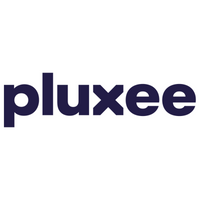A robust financial wellbeing strategy can ease the cost of living
Two out of three (67%) of Brits are changing roles to relocate to a more affordable area, according to online platform CV Genius.
You’re potentially losing talent because of the rising cost of living, which is why a robust and inclusive financial wellbeing strategy is crucial.
What does a great financial wellbeing strategy look like?
Employee financial wellbeing is about more than day-to-day costs.
It encompasses an end-to-end holistic approach that makes life more affordable, create financial resilience, and help employees plan for a financially healthy retirement.
With five generations in the workplace and Gen Alpha approaching working age, it’s vital that your strategy can keep pace with changing demographics.
The first thing to do is understand the characteristics and needs of your employees, and Pluxee UK's blog, Bridging The Generational Divide in the Workplace, is a great place to start.
Here are five things you should watch out for when creating your financial wellbeing strategy.
1. Generational tailoring
A one-size-fits-all approach won’t be effective.
While inclusivity demands that you make opportunities available for all, tailoring your strategy to incorporate different demographics is vital to its success.
In its blog, Welcoming the Younger Generation to the Workforce, Pluxee UK offers key factors to consider, such as the impact of student debt or lack of financial education.
Whereas the younger generations are just getting started, Millennials are in the thick of it – owning homes and juggling families while also planning for the future.
Alongside them, you have those closer to retirement concerned with getting their finances in the best position possible.
2. Non-traditional workers
Globally, the gig economy is valued at $455 billion, and 15% of the UK workforce class themselves as self-employed or freelance.
If you employ temporary or contractual employees in your business, you should include solutions to provide them financial wellbeing support within your strategy.
While many workers embrace the gig economy lifestyle, it can lack the security and consistency that full-time employees benefit from.
Temporary workers ought to have the same access to financial wellbeing benefits that make life more affordable as permanent employees.
Providing financial planning and tax education will also help them become financially resilient.
3. Inclusive and equitable access
One in seven (14%) of UK employees work exclusively from home, so communication and accessibility are also factors to look out for.
How you run financial education workshops, launch new employee benefits and share regular communications must guarantee that remote employees get the same opportunities to access their financial wellbeing tools as office-based colleagues.
Furthermore, you must consider language preferences, cultural needs and technical ability.
What provisions are in place to ensure deskless workers receive the same opportunity to engage with their financial wellbeing benefits as their desk-based colleagues?
4. Adapting to longevity and retirement realities
Employees are retiring later and living longer, which is something to factor in when providing pension advice and retirement planning solutions.
Consider educating younger generations on the importance of starting a pension as soon as they’re earning.
It may not be a priority for those just getting started, who may prefer taking home as much of their salary as possible to enjoy life or save for their next milestone – like buying a house, but you should give them the information they need to make informed decisions.
Pension policies change, and if we’re living for longer after retirement, our pot needs to be as healthy as possible.
5. Leveraging technology while bridging the digital divide
Technology is a vital part of your financial wellbeing strategy.
It’s not just about ensuring all employees have access, but also that you’re offering solutions that fit in with their lifestyle.
App-based budget management tools will appeal to tech-savvy Gen Zs, allowing them to educate themselves and track their money on the go.
Older employees may be more inclined to prefer face-to-face financial guidance, so considering how your employees want to receive support is vital to making it accessible and effective.
The key thing to remember is that demographics will continue to change, and the economic climate will fluctuate.
Your financial wellbeing strategy must be just as flexible, designed to evolve and adapt to meet employee and business needs.
Supplied by REBA Associate Member, Pluxee UK
Pluxee UK, is a leading employee benefits and engagement partner that opens up a world of opportunities to help people enjoy more of what really matters in their lives.








